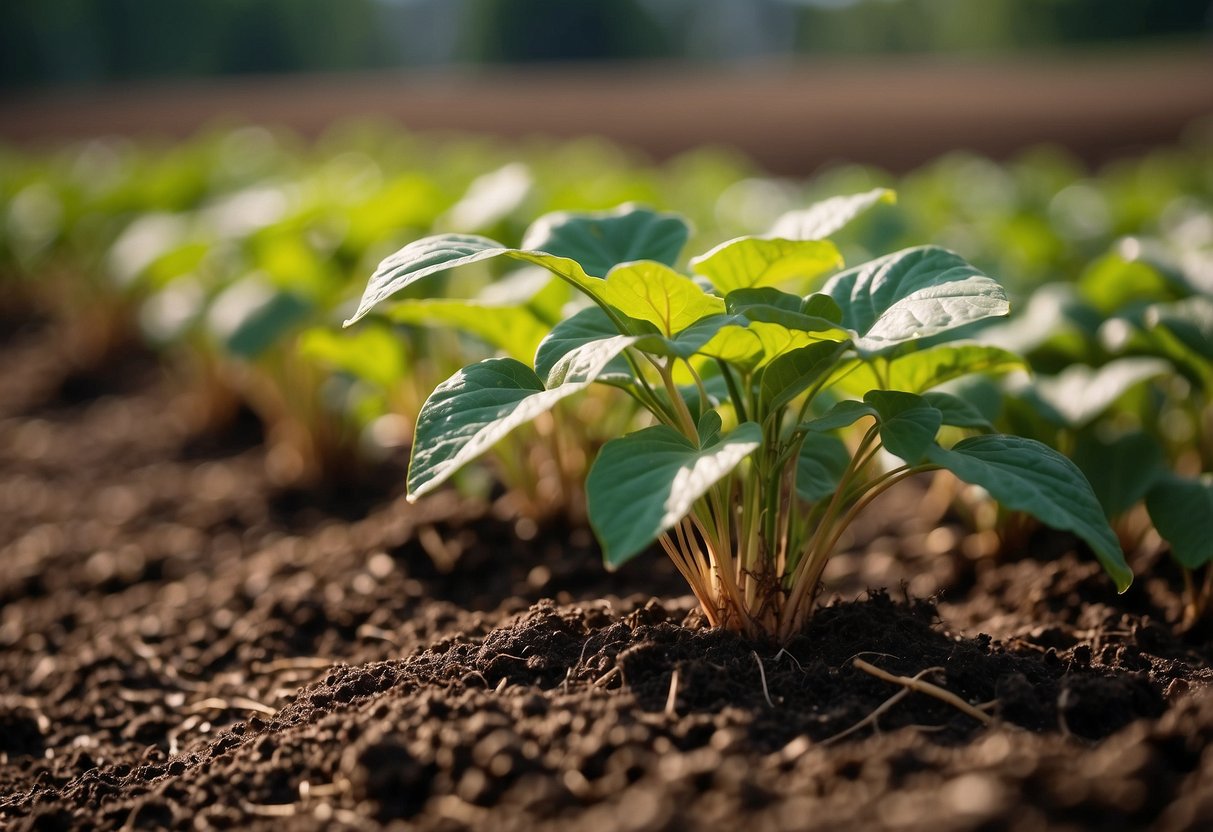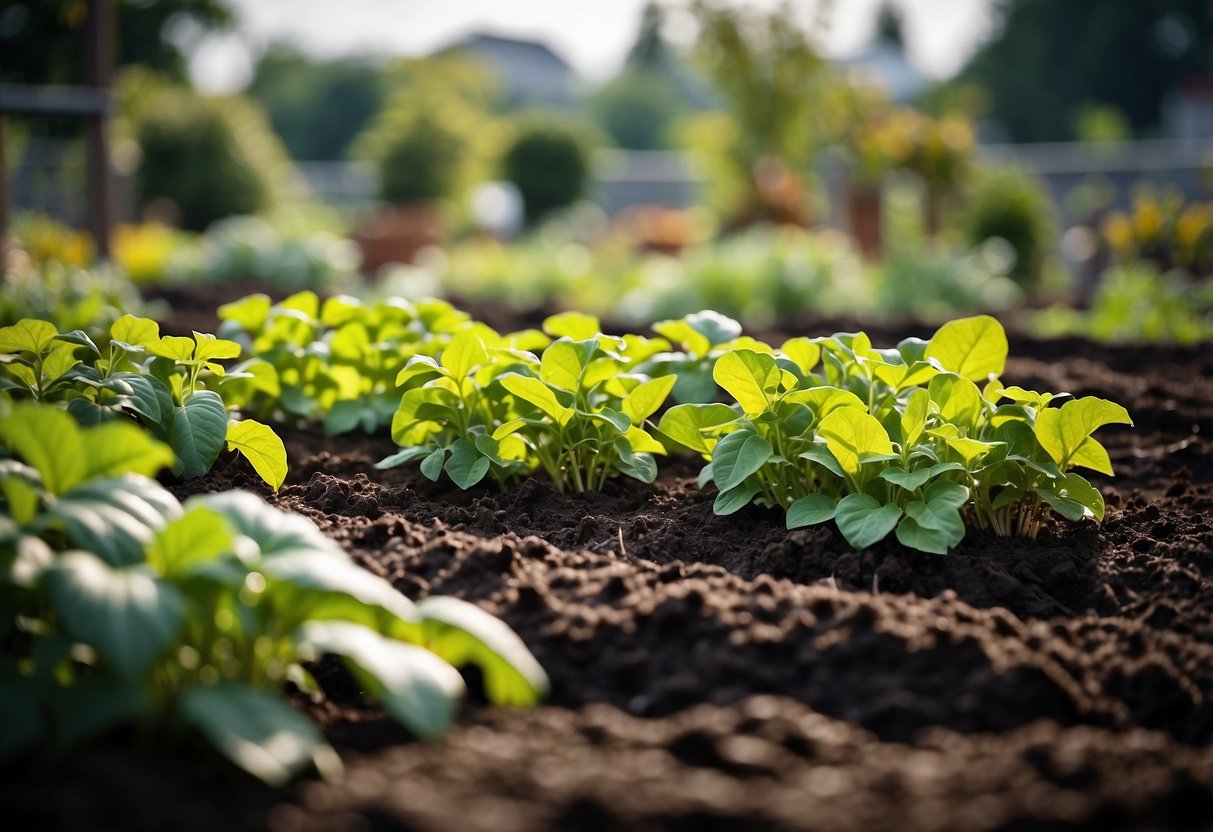Sweet Potatoes Garden Tips: Grow Delicious Tubers Easily
Growing sweet potatoes in your garden can be both fun and rewarding. These tasty tubers are not only delicious but also packed with nutrients. Whether you are a beginner or an experienced gardener, you can successfully grow sweet potatoes with the right tips and techniques.

Are you wondering how to get started with cultivating these versatile plants? With a bit of preparation and care, you can enjoy a bountiful harvest of sweet potatoes. From selecting the right variety to preparing your garden space, there are key steps you can take to ensure a successful growing season.
1) Choose the Right Varieties

Selecting the perfect variety of sweet potatoes is crucial for a successful harvest. There are many options, each with unique traits.
Covington is one popular choice. It was developed by the North Carolina Agricultural Research Service. This variety is known for its consistent size and sweet taste.
Look for certified disease-free slips from reputable nurseries to minimize risks of plant diseases. Make sure to plant the slips after the last frost for the best results.
2) Plant in Well-Drained Soil

Sweet potatoes thrive best in well-drained, loamy soil. Loose soil helps the roots grow deep and strong. If your soil is heavy clay, mix in plenty of organic matter like peat moss or compost.
Make sure the soil has a slightly acidic pH between 5.0 to 6.5. You can test your soil pH with a simple kit from your local garden center.
If your garden tends to hold water, consider planting in raised beds. This will improve drainage and keep your sweet potatoes happy.
3) Start Indoors in Colder Regions

If you live in a colder region, it’s best to start your sweet potato slips indoors.
Begin by placing half a sweet potato in a shallow bowl of water. Make sure the cut side is down and just touching the water surface. You’ll see roots forming in a few days.
You can also pot up the slips with a soil mix. This helps them grow strong before transplanting outside.
4) Use Mulch to Retain Moisture

Using mulch in your sweet potato garden helps keep the soil moist. Mulch acts as a barrier, reducing water evaporation from the soil. This means your plants will have more consistent access to water.
Mulch also controls weed growth. Fewer weeds mean less competition for water and nutrients, helping your sweet potatoes thrive. Try using EZ-Straw Mulch or other similar options to keep your garden in top shape.
5) Provide Plenty of Sunlight

Sweet potatoes love sunlight. Make sure they get at least 6-8 hours of direct sun each day. This will help them grow big and healthy.
Avoid planting in shady areas. Shade can stunt their growth and prevent the plants from developing properly. Sunny spots are the best for them.
If you notice your plants aren’t thriving, check if they are getting enough sunlight. Adjust their placement if needed.
6) Hill the Soil Around Plants

As your sweet potato plants grow, you should hill the soil around them. This means mounding the soil up around the base of the plants.
Hilling helps suppress weeds and improves your harvest. It also supports the plants as they start to vine.
By creating these mounds, you’ll encourage better growth and make it easier to dig up the sweet potatoes later.
7) Water Deeply but Infrequently

When growing sweet potatoes, it’s key to water deeply but not too often. This helps the roots grow stronger and reach deeper into the soil.
Make sure the entire root zone gets moist. Checking the soil with your finger can help you know when it’s time to water again.
Overwatering can harm your plants. Let the top few inches of soil dry out before watering again.
8) Rotate Crops to Prevent Disease

Rotating crops is a simple yet effective way to keep your sweet potatoes healthy.
By changing where you plant your sweet potatoes each season, you prevent pests and diseases from building up in the soil.
If you plant the same crop in the same spot year after year, harmful organisms can thrive.
Try planting sweet potatoes in a different area each year. Use this practice along with planting disease-resistant varieties. This helps your garden stay in tip-top shape and keeps your sweet potatoes healthy.
9) Use Compost for Nutrients

Adding compost to your sweet potato garden can make a big difference. Compost provides essential nutrients that help your plants grow strong and healthy.
You don’t need a lot—just a thin layer worked into the soil is enough. This helps improve soil structure and keeps your sweet potatoes happy.
Compost also retains moisture well, which is great for your plants’ root systems. This simple step can lead to better yields and tastier sweet potatoes.
10) Harvest Before First Frost

To ensure your sweet potatoes are at their best, you need to harvest them before the first fall frost. When frost hits, it can damage the sweet potatoes, reducing their quality and shelf life.
Look for yellowing leaves. This is a sign that the sweet potatoes are ready to be dug up. Usually, this occurs in late September or early October Gardening Know How.
Using a garden fork, gently dig around the plants to loosen the soil. Be careful, as sweet potatoes bruise easily Better Homes & Gardens. Harvesting on a sunny, dry day can make it easier and keep your sweet potatoes clean.
Preparing Your Garden

To grow sweet potatoes successfully, you need the right location and soil. Choose a sunny spot and prepare the soil well for optimum growth.
Choosing the Right Location
Sweet potatoes require plenty of sunlight. Aim for at least six hours of direct sun each day. Pick a spot that gets full sun and has good drainage. This helps prevent water from pooling, which can cause root rot.
Look for a location that is away from trees and tall plants to avoid shading. Sweet potatoes grow best in warm conditions, so choose a site that gets lots of warmth and is protected from strong winds. If possible, use a site with a slight slope to improve drainage and sun exposure.
Soil Preparation
Sweet potatoes thrive in well-drained, loamy soil with a pH between 5.5 and 6.5. Test your soil to ensure it meets these requirements. If your soil is too heavy or clay-like, mix in sand or compost to improve its texture and drainage quality.
Steps to prepare your soil:
- Loosen the soil: Dig down at least 10 inches to ensure the soil is not compacted and roots can spread easily.
- Add organic matter: Work in compost, well-rotted manure, or other organic materials to enrich the soil and improve drainage.
- Check pH levels: Adjust the pH if necessary using lime to raise it or sulfur to lower it.
Make sure your soil is nutrient-rich but not heavily fertilized with nitrogen, as this can lead to more vine growth and fewer tubers. Keeping the soil warm and slightly moist will help your sweet potatoes grow strong.
Planting Sweet Potatoes

When planting sweet potatoes, choosing the right variety and following proper planting techniques are crucial for a successful harvest. You will need to prepare the soil, select suitable varieties, and utilize effective planting strategies.
Selecting Sweet Potato Varieties
Select a variety that thrives in your climate. Common varieties like Beauregard, Jewel, and Garnet are popular for their flavor and resilience. Make sure to start with an organic sweet potato of the variety you wish to grow. Slips, or sprouts from the parent plant, will replicate the original plant’s properties.
Choose disease-free slips from reliable sources. Look for vibrant, healthy shoots as they indicate strong, healthy growth. Whether you prefer traditional orange-fleshed varieties, or other colors like purple or white, ensure they are suited to your growing conditions.
Proper Planting Techniques
Prepare your garden bed by loosening the soil about 18 inches in diameter and 6 inches deep to avoid injuring the roots. Cut away some vines carefully to prevent plant damage. Plant the slips 12 to 18 inches apart with the roots and a ½-inch of the stem submerged in the soil.
Water slips daily for the first four days using a liquid fertilizer high in phosphorous to help them root properly. Avoid overwatering as sweet potatoes thrive in well-drained soil. Consider using a seedling heat mat to provide warmth and promote growth.
Use a light, porous soil mix if you are planting in containers. Ensure your container is at least 12 inches deep and 15 inches wide to allow for ample root development. For detailed instructions on planting sweet potatoes, visit GardenBeast.







